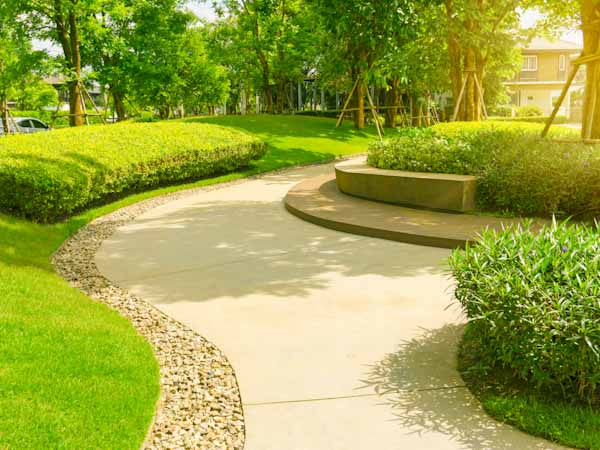Lawn Edging Ideas: Transform Your Garden With Stylish And Functional Borders

Lawn edging is a simple yet powerful way to enhance the appearance and functionality of your garden. By clearly defining the boundaries between your lawn, flower beds, walkways, and other landscaping elements, edging helps keep your yard neat, organized, and visually appealing. Whether you’re a seasoned gardener or a weekend DIY enthusiast, exploring creative lawn edging ideas can inspire you to elevate your outdoor space. Here’s a look at some popular and innovative lawn edging ideas to consider for your garden.
1. Natural Stone Edging
Natural stone edging offers a timeless, elegant look that blends beautifully with most garden styles. Using flagstones, river rocks, or slate, you can create smooth or jagged borders that provide both lawn edgings structure and texture. Stone edging is durable and requires minimal maintenance, making it ideal for long-lasting garden borders. You can arrange stones in a continuous line or as a loose pile for a more rustic effect.
2. Brick and Paver Edging
Bricks and pavers are versatile and easy to install, making them a favorite choice for lawn edging. They come in various colors, shapes, and sizes, allowing you to customize your borders to match your garden theme. Bricks can be laid flat, stood on edge, or arranged in creative patterns such as herringbone or basket weave. This type of edging creates a clean, polished look that works well with formal gardens and walkways.
3. Metal Edging
For a modern and sleek lawn border, metal edging is an excellent option. Materials like steel, aluminum, or corten steel provide strong, thin profiles that can easily curve and flex to fit your garden’s shape. Metal edging is highly durable and resistant to weather, pests, and lawn equipment damage. It’s especially popular for contemporary gardens and urban landscapes.
4. Plastic and Rubber Edging
If you’re looking for an affordable, lightweight, and flexible option, plastic or recycled rubber edging can be a practical choice. These materials come in rolls or pre-formed sections that are easy to install along curves and straight lines. They’re resistant to cracking and fading, and many products are made from recycled materials, making them eco-friendly. Plastic edging is great for DIY gardeners who want a simple yet effective border.
5. Natural Wood Edging
Wood edging adds warmth and rustic charm to your lawn. Options like cedar, redwood, or treated pine can be cut into planks, logs, or even round timbers for a natural boundary. Wooden edging is easy to work with but requires regular maintenance, such as sealing or staining, to prevent rot and weather damage. It’s a lovely choice for cottage gardens or woodland-style landscapes.
6. Living Edging
For an organic and eco-friendly approach, consider using living plants as your lawn edging. Low-growing shrubs, ornamental grasses, or groundcovers such as lavender, boxwood, or creeping thyme can create soft, natural borders that attract pollinators and add greenery year-round. Living edging requires regular trimming but offers a dynamic and beautiful alternative to hard materials.
Final Thoughts
Choosing the right lawn edging depends on your garden style, budget, and how much maintenance you’re willing to commit to. Combining different edging materials can also add interest and help zone different areas in your yard. Whether you opt for classic stone, sleek metal, or lush living borders, well-executed lawn edging is a fantastic way to upgrade your outdoor space with style and practicality.